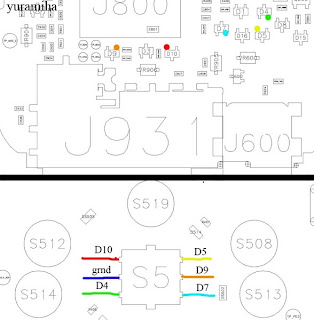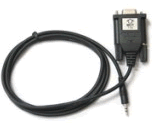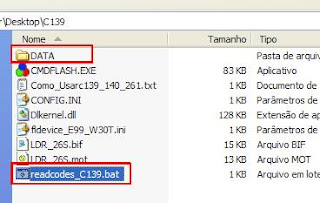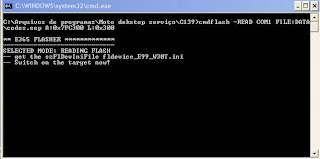C113, C114, C115, C115i, C116, C117, C118 software version: #02#*
C138, C139, C140 software version: #02#*
C155, C156, C157 software version: #02#*
C257, C261 software version: #02#*
V171, V172, V173 software version: #02#*
V175, V176, V176 software version: #02#*
C168, W220 software version: *#**837#
W208, W375 software version: #02#*
and "yes"''
Welcome to Mobile Phone Guide
Service codes Motorola
Labels: "Motorola"
I-mobile Secret Code
I-mobile Inno30, 55, 89, 90, 99, 100, A10, A20, P10, Vk200
- Set full factory *741*737381#
- Set full factory *741*7373868#
- Set full factory *741*2878#
- Set Engineer Mode *888*888#
- Check software version *888*837#
I-mobile 100 ,200 , 313
- Check software version #*888#
I-mobile 309, 310
- Check software version *0*4636#
- Test Mode *0*6268#
I-mobile 311
- Check software version #*878#
I-mobile 511
- Check software version *1222*1#
I-mobile 301, 302,308, 508, 601, 602, 603, 604, 606, 611, 901, 902
- Check software version *#159#
- Set Factory Mode *#32787#
- Set Engineer Mode *#3646633#
I-mobile 503, 506, 605, 600, 607, 608
- Set Engineer Mode ***503#
- Set Factory Mode ***504#
- Set Auto Test ***505#
I-mobile 509, 612
- Set Factory Mode *#66*#
I-mobile 504, 505, 803
- Check software version *68*48#
- Set full factory *789#
- Test Mode *#789#
I-mobile 305, 306, 315, 510, 609, 609i,516
- Check software version *#8375#
- Set Factory Mode 878
I-mobile 610
- Check software version *#22#
I-mobile J101, J102
- Test Mode *23638777*783781#
I-mobile 502, 502i, 505, k9, 802
- Check software version *201206*4636#
Labels: "I-mobile"
Convert Unlock Motorola W370 To W375

Unlock with Smartmoto then Flash with Scout.
To Flash with Scout, below the Firmware (Link):
http://www.ziddu.com/.../FLEX_W375_FC_001.zip.html
http://www.ziddu.com/.../LP_W375_0064_A01.zip.html
http://www.ziddu.com/.../SW_W375_0.0.75.K2.sfl.zip
Flashing with Scout manual:
1) Firmware file
2) Flex file
3) Language pack
FLEX_W375_AF_003_Generic.sfl
SW_W375_0.0.64.K2.sfl
LP_W375_0062_007.stf
Labels: "Motorola"
Repair Keypad Motorola C650
This is how to repair keypad on Motorola C650
Below the C650 Keypad Schematic:
This is how to repair keypad on Motorola C650
Below the C650 Keypad Schematic:
Labels: Repair Motorola
Unlock Motorola C139
For unlock C139.
Using the cable for T190 :
Make the donwload of the file enclosed
Conect cable fron phone in the computer ( com1)
Clik in "readcodes_c139.bat" and pulse in boton power in phone.
In the paste " it DATES " the text file will be stored as subsíde code to be typed in the cellular to appear the screen asking for typing the code it is necessary to put a chip of different operator.
to appear the screen asking for typing the code it is necessary to put a chip of different operator.
Download C139.rar here:
http://www.ziddu.com/download/5110676/C139.rar.html
Labels: "Motorola"
Complete Blackberry Schematics PASSWORD
Copy your password below to open the archive.
Your Password : schematicsforbbfree
Nokia N73 Schematics PASSWORD
Copy paste password below to open archive.
Your Password : nokian73schematics
Cellular Terms and Acronyms
ACCOLC
A 4-bit field designating the overload class for the cellular phone. The intention of this entry is to allow the Cellular System to be able to determine priority in the event of a system overload. It is currently useless as the system operators have generally not provided guidance for their installers. The usual system now in effect in the U.S. is to use a “0” plus the last digit of the phone number. Test phones should be set at “10”, emergency vehicles at “11”, and “12” through “15” are reserved. (A class 15 system is police, fire, or military).
AMPS
The abbreviation for the cellular system in use in the United States and other countries. It stands for “Advanced Mobile Telephone System”.
EE
A 1-bit flag designating that end-to-end signaling is enabled. End-to-end signaling means that DTMF tones will be transmitted on the voice channel as well as being echoed on the handset. This feature in necessary for such services as Bank by Phone, activating answering machines and in third party long distance services. A “1” enables the flag. Usually set to “1”.
GIM
A 4-bit field designating the Group Identification Mark. This number tells the cellular system how far to look in the SIDH to determine if it is roaming in a system which may have a roam agreement with the phone system. It is usually set to “10”.
GSM
The new digital cellular system being developed in Europe. In English, this roughly means “General Mobile Service”.
HA
A 1-bit flag designating that the horn alert feature in enabled. If installed, a car telephone will activate the car horn when a call comes in. “1” enables the flag. Usually set to “0”.
HF
A 1-bit flag designating that the handsfree option is enabled. A “1” enables the flag. Often, transceivers supplied as hands-free units require that this flag be left at “0”.
IPCH
An 11-bit field designating the initial paging channel to be used if in the home system. Normally it is 334 for wireline systems, and 333 for non- wireline systems. Most phones allow other settings for test purposes.
LOCK DIGITS
A 4-bit field designating the unlock code. The digit “0” in the lock code is represented by an “A” in the actual NAM hexadecimal data. A lock code of all “0” sometimes unlocks the cellular phone. (Note: Lock codes are 3 digits. When programming a phone use “0” as the first number.)
LU
Local Use Flag. This flag determines whether a cell phone must pre-register with a cell system. Pre-registration with the system means that a mobile must transmit its parameters to the cellular system as soon as the power-up and control channel tasks are completed. “1” enables the flag. Usually set to “1”.
MHz
Megahertz. This is a term that is used to represent the frequency of a signal. A Hertz is one cycle per second. A megahertz is a million cycles per second.
MIN MARK
A 1-bit flag designating that MIN2 (area code) is always sent when making system access. “1” enables the flag. Usually set to “1”.
MIN2
A 10-bit field representing the area code of the mobile ID number.
MIN1
A 24-bit field representing the mobile telephone number. MIN2 plus MIN1 equals MIN, the 10-digit phone number.
NAM
Number Assignment Module. The NAM contains all the information that can be programmed directly from the handset. (i.e. SIDH,MIN,LOCK-CODE,etc.).
PS
1 1-bit flag designating the preferred system. If PS is “0”, channels 334 through 666 are used. If PS is “1” then channels 1 through 333 are used. Even numbered system numbers (B systems) require a PS of “0”, odd system numbers (A systems) require a “1”.
REP
A 1-bit flag designating that repertory memory (speed dialing) in the cellular phone is enabled. Once a again, a “1” enables the flag.
SCM
A 4-bit field designating the Station Class Mark. A (3-Watt) 832 channel mobile unit typically will be 1000, a 1.2 Watt portable 1001 or a 0.6 Watt handheld 1010 or 1110 (discontinuous transmission, meaning push-to-talk). These are class I, Class II and Class III power levels respectively. With the SCM the cellular system determines whether or not a cellular phone can be switched to one of the 156 channels. Bit 1 is “0” for 666 and “1” for 832 (See cellular frequency. list). Bit 2 is “0” for a mobile unit and “1” for VOX transmit. Bits 3 and 4 identify the power class of the phone:
“00” = 3.0 watts “01” = 1.2 watts
“10” = 0.6 watts “11” is not assigned
SIDH
A 15-bit field in the NAM designating the System Identification for the Home System. Bit 0 of the SIDH corresponds to the Preferred System flag used elsewhere in the NAM. Bits 6 and 5 of byte 0 are international code bits. Normally the SIDH is entered during programming of the phone as a 5 digit decimal number. Enter 0’s to the left-most unused positions when reprogramming.
TACS
The abbreviation for the analog cellular system currently being used in European countries. “Total Access Communications System”.
UHF
Ultra High Frequency. This is all frequencies above 300 MHz and below 3000 Mhz.
Labels: Cellular Source








